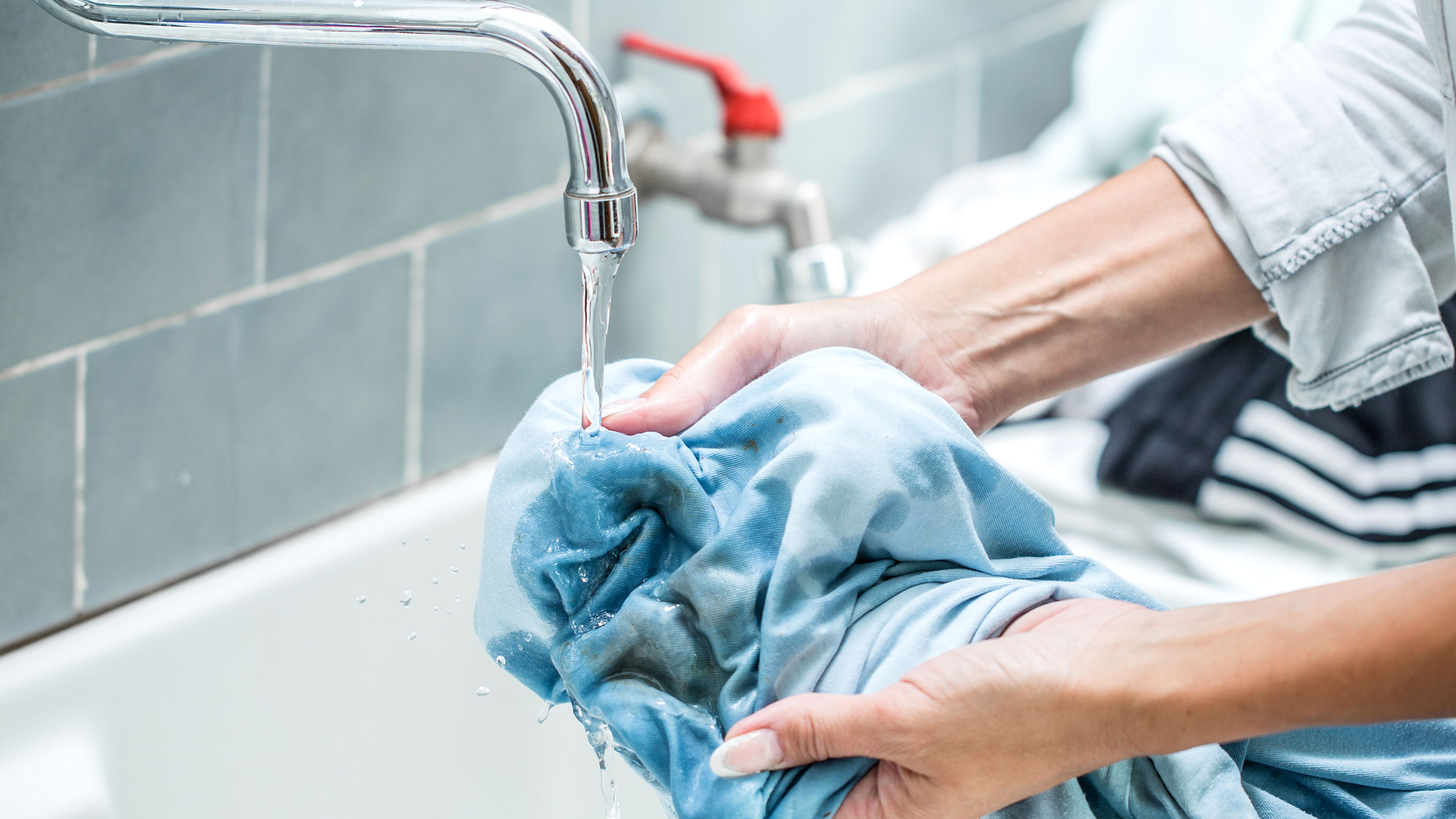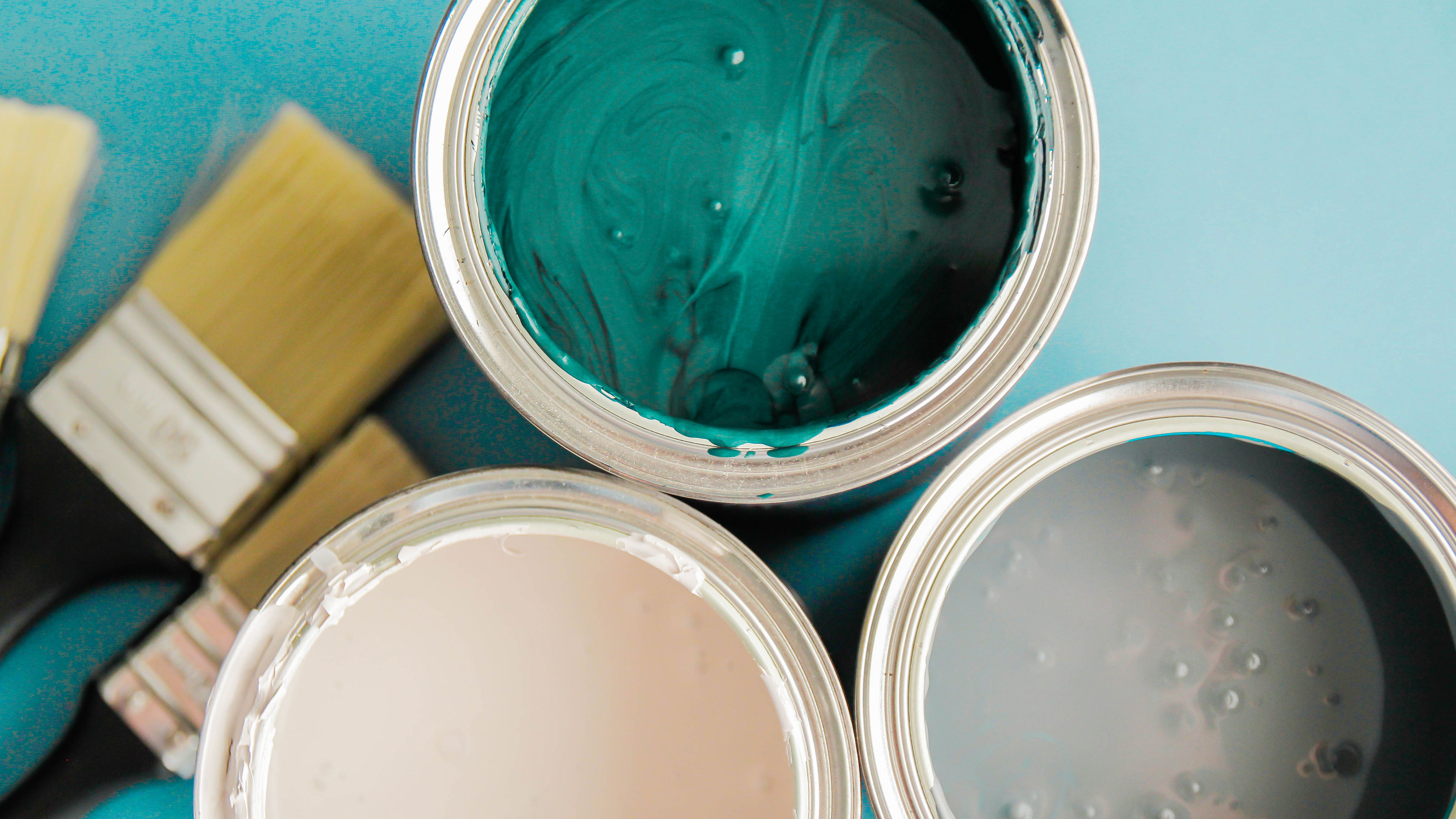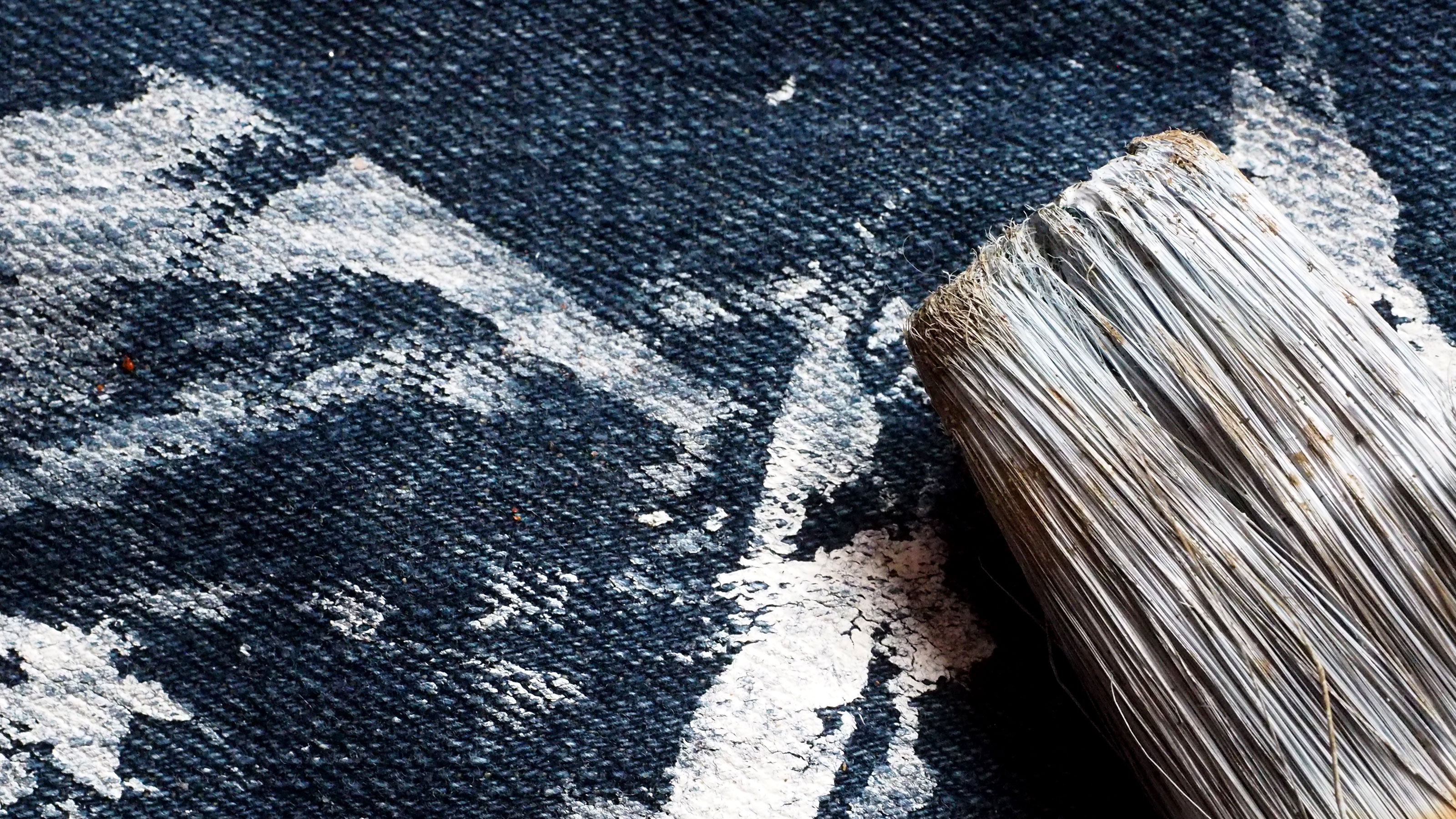How to get paint out of clothes and restore to them to their former glory
Learn how to get paint out of clothes and wash away wet paint and give dried paint the boot with these smart but simple solutions

Paint can ruin clothes, and having the knowledge on how to get paint out of clothes is a smart way to save them. Whether you brushed a newly emulsioned wall, bumped into a glossed door or a school project got out of control, you don’t want to waste time trying to get the paint off your clothes. The quicker you tackle the problem the easier it will be.
But, don’t panic if the paint has dried, it's not the end of the world. It can still be removed, but it will take more time and effort to get rid of the paint. One simple tip when painting a wall, door or anything else is warn everyone, put up a notice or even a barrier. Hopefully this will go long way to stop paint accidentally getting onto clothing, but if it doesn’t, our guide below will have the answer.
How to get paint out of clothes: What type of paint is it?
Before you tackle the problem of removing paint from clothes you need to know what type of paint it is. It's important to know as this will determine how you are going to get rid of the paint. There are typically two types of paint you will be dealing with: water-based and oil-based.

What are water-based paints?
Water-based paints are also known as acrylic and latex paints. They contain a pigment (which helps create the colour of the paint) and a binder which helps it mix with water to create the paint.
Emulsion like this Lick White Matt Emulsion paint from B&Q is a water-based paint, as is acrylic paint commonly used for arts and crafts. Also, satin and gloss paint like Dulux Trade Pure brilliant white High gloss from B&Q often have water based and oil based options.
The distinct advantage when it comes to cleaning is that water-based paint can be cleaned and removed with water and a detergent. But, it dries quicker than oil-based paints.
What are oil-based paints?
Like water-based paint, an oil-based paint boasts a pigment and binder, but instead of water it uses natural or synthetic oil as its main component. This means that it typically dries harder than water-based paints, which often make it more difficult to remove.
How to get acrylic paint out of clothes
Here we look at how to remove water-based paints that are wet and dry. If the paint is still wet it's much easier to deal with.
How to get wet water-based paint out of clothes
If the paint is still wet the first thing to do is dab it with kitchen roll or a sponge to get rid of any excess paint. Then soak the affected area with warm water and get a clean sponge, add a dab of washing up liquid and wet.
Now vigorously dab the area with the sponge, rinse and repeat until the paint has gone. Finally, put the clothing in a washing machine and wash as usual.
How to remove dry water-based paint out of clothes
If the paint is dry, start by twisting the clothing to help break up the paint. Now get a household spoon, put the clothing on a solid surface and scrape as much of the dry paint off as possible. Note, you can use scissors to cut off large chunks of paint, but be careful not to cut the clothing. Finally, use your thumbnail for smaller bits of paint.
Now soak the area with warm water from the back of the material. Get a sponge, add a dash of washing up liquid and dab and gently rub the area. Rub in one direction. Repeat this until all or most of the paint has gone. Finally wash on a normal cycle. Repeat this process if needed.

How to get gloss out of clothes
Oil-based paints like gloss follow a similar removal pattern to water-based paints, but with a few subtle differences which we will show you here.
How to get wet oil-based paint out of clothes
If the paint is wet remove as much paint as possible by dabbing with kitchen roll or cloth. Now place a cloth on the affected area and turn the clothing inside out, while keeping the cloth on the area. Now place another cloth and a piece of cardboard or wood under the cloth to stop the paint bleeding through to the other side of the garment.
Get a sponge or cloth and add a brush cleaner or white spirit like this Tetrion White Spirit from Amazon and dab on the paint until you’ve removed all the paint. Now rinse the area with warm water and soak the garment overnight in water and detergent. Finish by putting through a normal wash.
How to remove dry oil-based paint from clothes
This is very similar to removing wet oil-based paint, but first you need to remove as much of the dry paint as possible. Once you have done this follow the instructions for wet paint. However, it might take longer to soften and remove the dry paint with the white spirit /brush cleaner.

FAQs
Can nail polish remover remove paint?
Nail polish remover can remove paint, but you only need to use it on oil-based paints. But you need to be careful that it won’t spoil the fabric you are trying to clean. Check it doesn’t contain acetate, which fabrics that are like silk, but aren’t silk, often do. Do a small patch test on a part of the clothing that won't be seen to see how it works.
Get the Homebuilding & Renovating Newsletter
Bring your dream home to life with expert advice, how to guides and design inspiration. Sign up for our newsletter and get two free tickets to a Homebuilding & Renovating Show near you.
Steve Jenkins is a freelance content creator with over two decades of experience working in digital and print and was previously the DIY content editor for Homebuilding & Renovating.
He is a keen DIYer with over 20 years of experience in transforming and renovating the many homes he has lived in. He specialises in painting and decorating, but has a wide range of skills gleaned from working in the building trade for around 10 years and spending time at night school learning how to plaster and plumb.
He has fitted kitchens, tiled bathrooms and kitchens, laid many floors, built partition walls, plastered walls, plumbed in bathrooms, worked on loft conversions and much more. And when he's not sure how to tackle a DIY project he has a wide network of friends – including plumbers, gas engineers, tilers, carpenters, painters and decorators, electricians and builders – in the trade to call upon.

